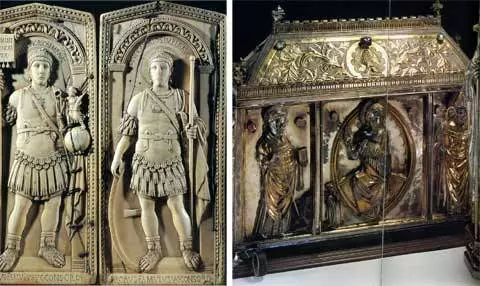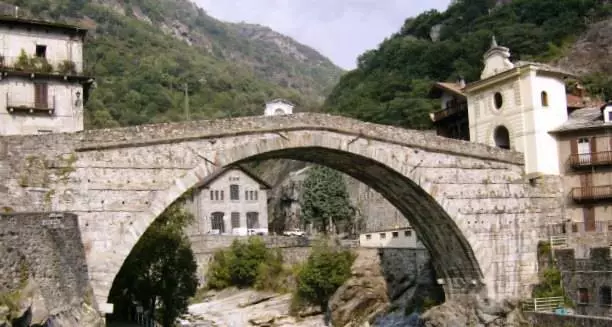Perhaps the name of this town is not very earlier among our compatriots. But the town is very beautiful! And that's what you can see.
Sant Also complex (Sant'ORSO)

One of the brightest and largest sights of the city. You can also say that this is one of the most interesting religious complexes in the Alps. The complex consists of the temples of St. Peter and Sant Orso, the bell tower, the club (covered gallery, framing the rectangular courtyard or a monastery garden) and a small monastery built in the Renaissance style.
The complex is divided into the territory of the urban necropolis. The complex was originally small, but in the 9th century, during the board of Carroling the building was completely reconstructed. And then again. Gradually, the complex expanded. In the 15th century, choirs and mosaics added to the temple. The special value of the complex is a collection of missals - liturgical books and reliquaries, including the power of the saints. The beautiful clourter is decorated with figures of people and animals and capitals (the top of the columns, such all carved) with scenes from the life of Ursa Aostiy. "Marble masterpiece" - so it was even nicknamed (after all, the columns are made of marble). In total, 37 columns can be seen in this gallery, although some of them were simply demolished in the 18th century. It is impossible not to notice the carbonate bell tower of 44 meters, which was erected in the 10th century. It keeps the look of medieval architecture, and the Romance appearance "tied" in the 12th century. The inner decoration of the church is also impressive, especially the original ceilings, decorated with fragments of Romanesque painting with scenes from the New Testament.
Address: Via Jean Sebastiano Linty, 2
Museum of the Cathedral of Santa Maria Assunta (Cathedral Treasure Museum)

The main value of the museum is the works of art of the masters of the 13-18th centuries of this area. For example, a very interesting diptyach (something like a book, however, from two intertwined dusks) from ivory with the image of Emperor Neorio, parts of marble gravestones for famous personalities of the 15th century, gold jewelry and so on. The main pearls of the museum are a huge Reliquarian of San Grazo, a cross from the 14th century crystal, the bust of St. John the Baptist, ancient gothic sculptures from the tree and crucifixion of the 13-14th centuries. And, of course, an oval agate camoy of the 1st century of our era.
Address: Piazza Giovanni XXIII, 1
Roman Cryptoportic (CRIPTOPORTICO Forense Forum)

To begin with, the cryptoportic is an underground corridor or a basement, where the light falls through narrow slots or openings from above. Usually, amphoras were stored there or something. So, the cryptoportic in Aoste is located next to the Cathedral. The underground chopping gallery illuminates the help of light shafts. The cryptoportic in the shape of a horsepiest today has a double corridor and ceiling with beams that support columns. Why have this thing built this thing, in fact, do not know exactly. Most likely, to maintain soil sewing in this place. And maybe as a commodity warehouse and a grain (and marble columns are part of the temple). In the Middle Ages, this place was used as wine cellar.
Ponte Di Pietra Bridge (Ponte di Pietra)


The name of the place, in fact, is translated as a "stone bridge". Located in the Val d'Aosta region and runs over the river. The bridge is in length about 17 meters and about 6 meters in width. The arch is laid out with large bricks, but we are lined with all Swiss sandstone. The bridge was built somewhere in 30-14 AD. The bridge was built with a strategic destination.
In the Middle Ages, the strongest flood of the river flow has changed its direction. So, under the bridge, our thin strika remained, which dried at all later. So I didn't need the bridge, and gradually I entered the earth. Only recently came off.
By the way, this is not the only similar bridge. MOST POND D'Ael in the town of the same name in the 3rd century BC - he was needed to supply the Military colony of Augusta Augusti Pretoria with water in agricultural purposes. In addition, the bridge was part of a 6-kilometer long aqueduct extending along the rags of the valley. Today, this path is the exhausted pedestrian route.
